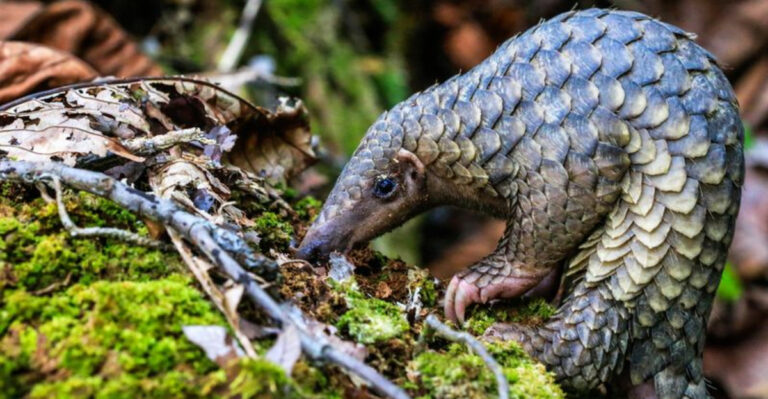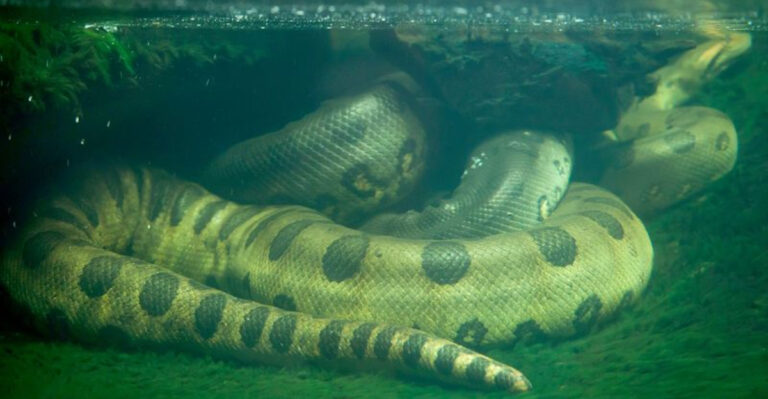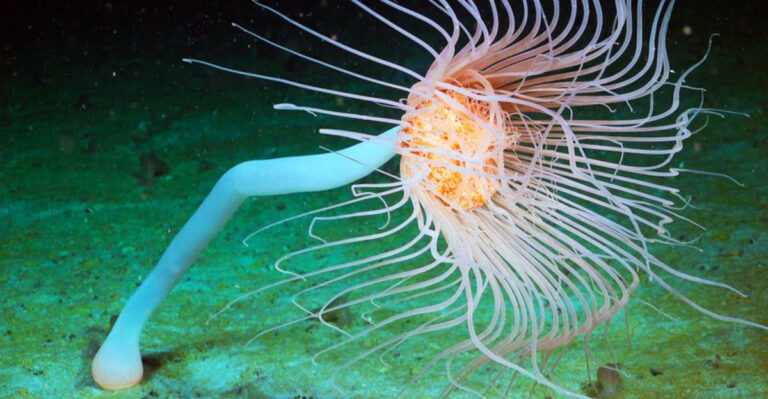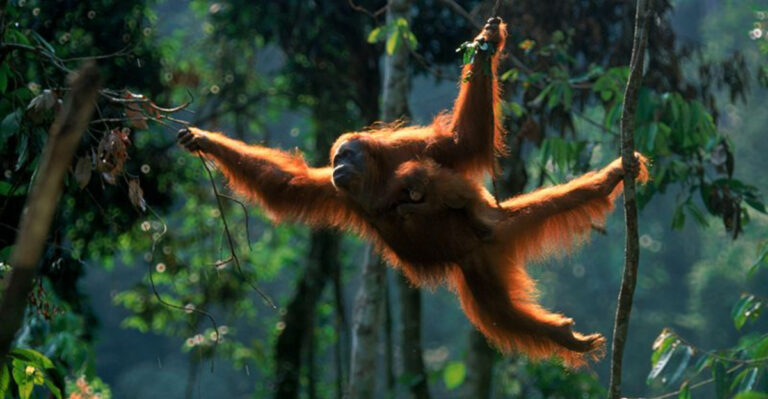15 American Wildlife Species Quietly Disappearing From Forests
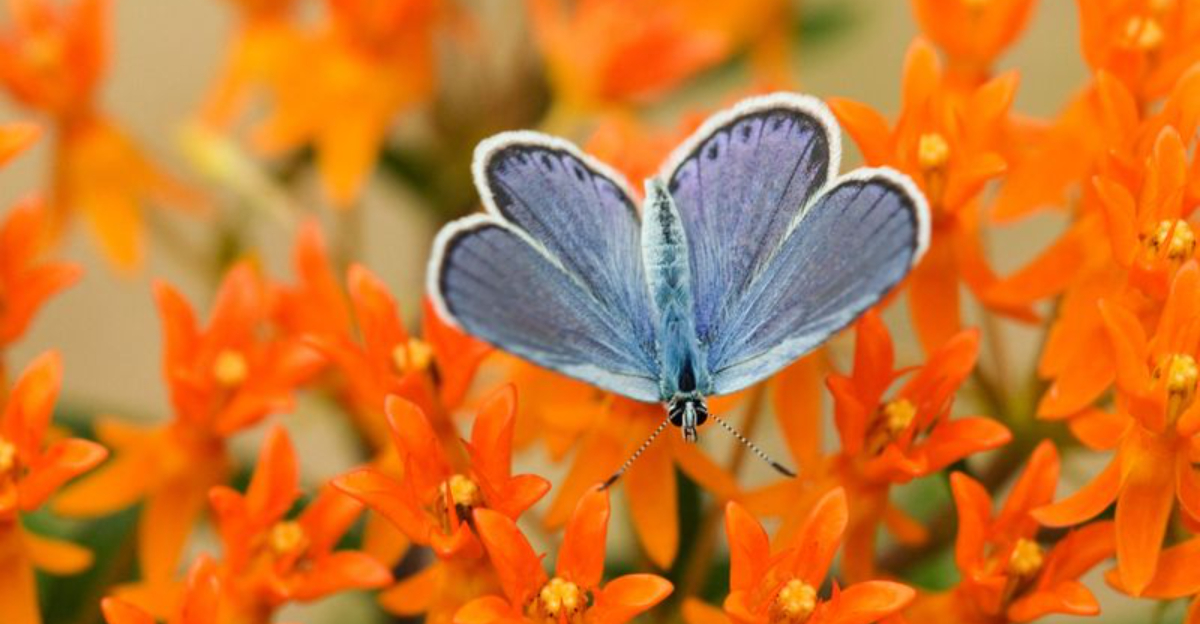
Our American forests are changing in ways most of us don’t notice. While trees still stand tall, many creatures that once called these woods home are becoming increasingly rare.
From tiny insects to majestic mammals, these silent disappearances threaten the delicate balance of our woodland ecosystems. Here’s a look at forest dwellers whose populations are dwindling right under our noses.
1. North American Wolverine
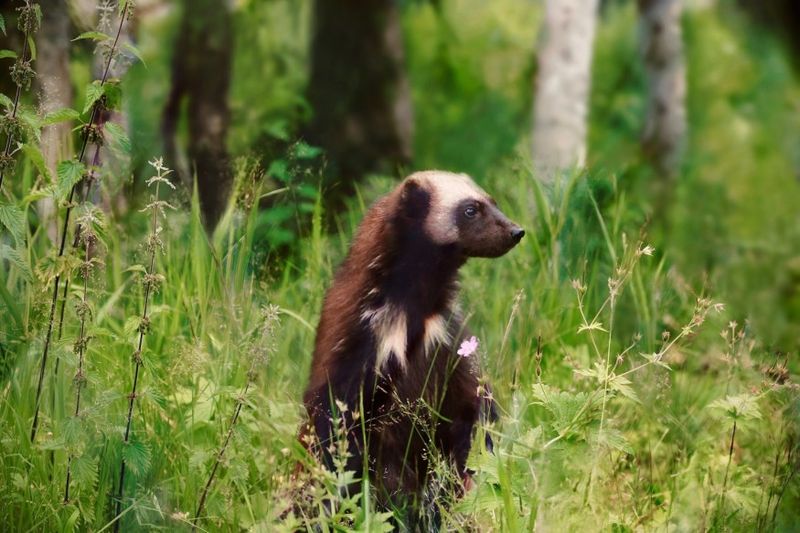
Only about 300 of these fierce predators remain in the lower 48 states. These solitary animals need vast, undisturbed wilderness to thrive, making them especially vulnerable to habitat fragmentation.
Climate change threatens their snowy habitats, as wolverines depend on deep snow for denning and food storage. Despite their tough reputation, these resilient creatures face an uncertain future in warming forests.
2. Eastern Hellbender
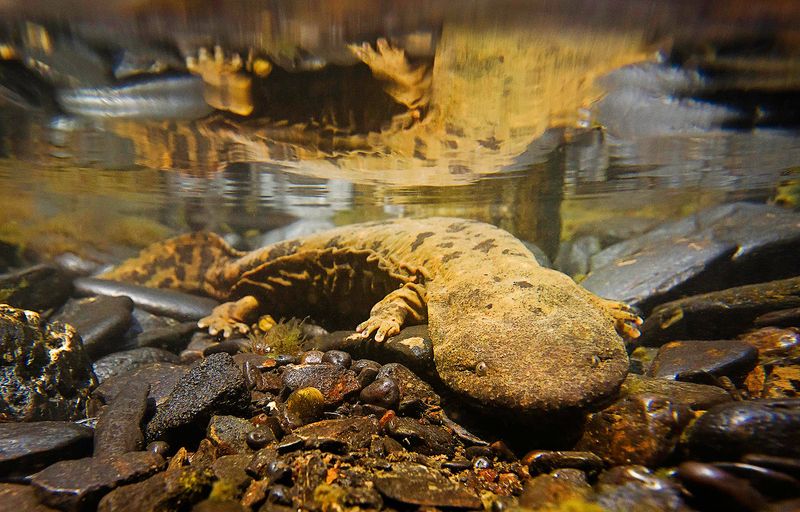
Wrinkled skin and a flat body give this salamander its unusual appearance. Living under rocks in clear, fast-moving streams within forested watersheds, these gentle giants breathe through their skin, making them ultra-sensitive to water pollution.
Logging and agricultural runoff have devastated their populations. Once abundant across eastern forests, these aquatic creatures have vanished from many waterways they called home for millions of years.
3. Ivory-billed Woodpecker
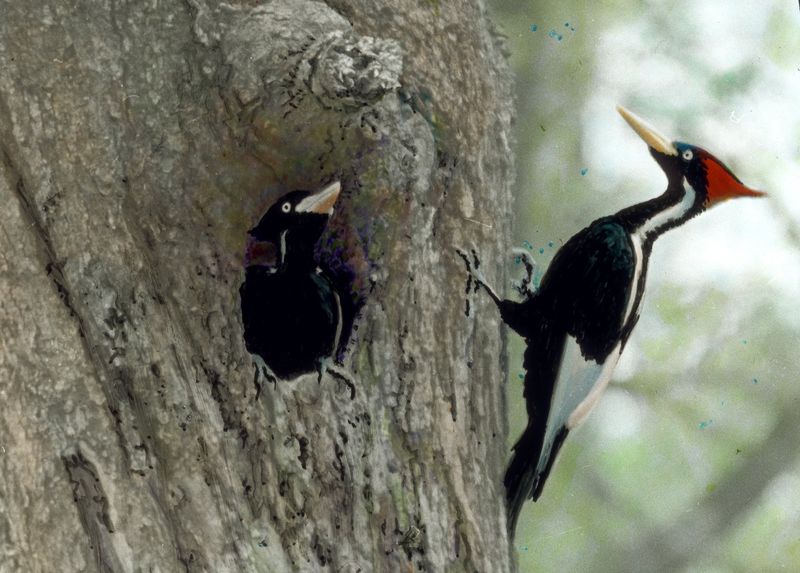
Whispers of hope persist about this magnificent bird many scientists consider extinct. The size of a crow with striking white bills and wing patches, these woodpeckers required vast old-growth forests to survive. Extensive logging of southern bottomland forests sealed their fate.
The last confirmed sighting occurred in 1944, though occasional unconfirmed reports keep their legend alive in the misty forests they once called home.
4. American Marten
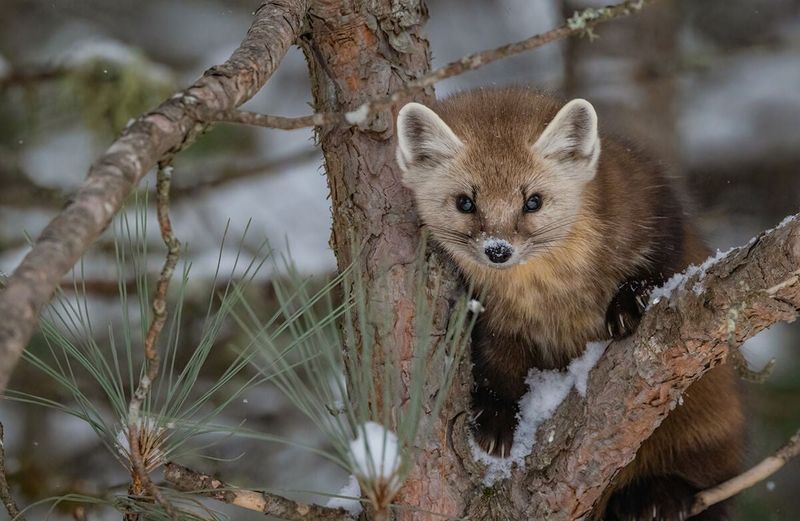
Chocolate-brown fur and a bushy tail make these forest acrobats a rare delight to spot. Bouncing through treetops and hunting on forest floors, these cat-sized members of the weasel family need mature forests with complex structures to thrive.
Extensive logging and forest fragmentation have isolated populations. Their decline serves as a warning sign of unhealthy forest ecosystems across the northern United States, where they once ranged widely.
5. Rusty Patched Bumble Bee
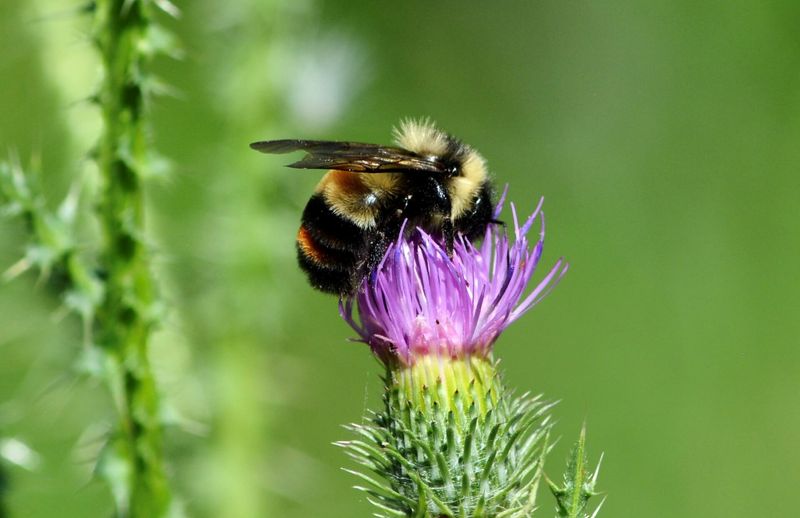
Once buzzing abundantly across 28 states, these vital pollinators have vanished from 87% of their historic range. The distinctive rusty patch on workers’ backs makes them recognizable to careful observers in woodland edges and forest clearings.
Pesticides, habitat loss, and climate change have all contributed to their decline. Their disappearance threatens wildflowers that evolved alongside them, potentially triggering cascading ecological effects throughout forest ecosystems.
6. Florida Panther
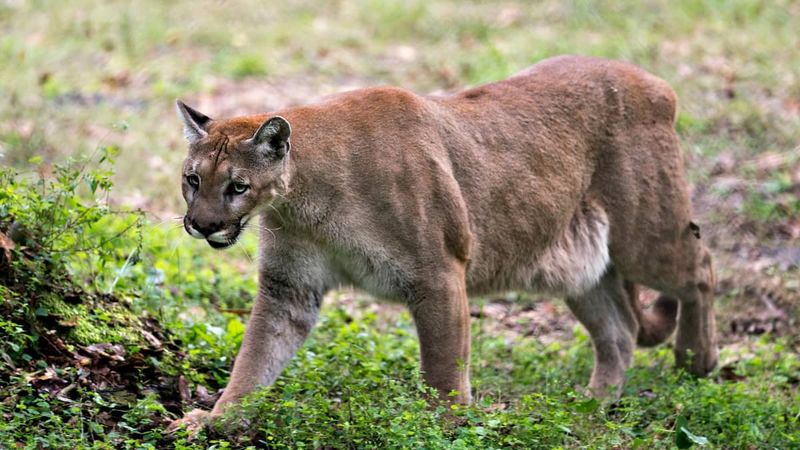
Moving like a shadow through the Everglades, the elusive Florida Panther is a sight seldom seen. Its once huge population has decreased due to habitat fragmentation and vehicle collisions.
Imagine the piercing gaze of this solitary feline, its powerful limbs crafted for stealth, now facing the imminent threat of extinction. Conservation efforts remain its only hope.
Did you know? The Florida Panther is the only cougar population east of the Mississippi River, a remnant of a time when these big cats roamed more expansively.
7. Carolina Parakeet
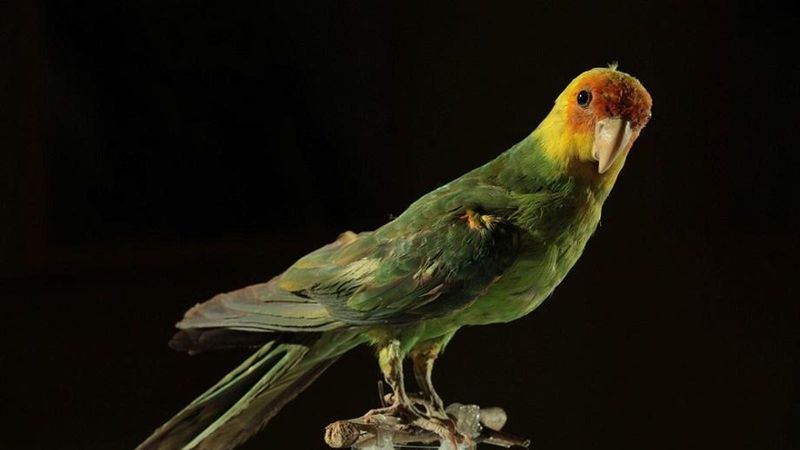
Vibrant green feathers with splashes of yellow and orange once brightened our eastern forests. These noisy, social birds traveled in flocks, feasting on forest fruits and seeds.
The last captive bird died in 1918 at Cincinnati Zoo. Habitat destruction, hunting for their colorful feathers, and farmers who considered them pests all contributed to their extinction. Their disappearance left a colorful void in American forests that can never be filled.
8. Red Wolf
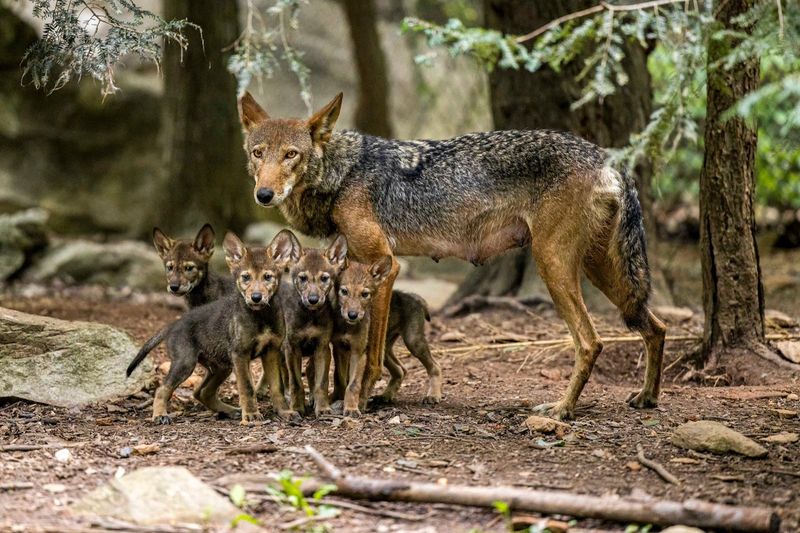
Smaller than their gray cousins but larger than coyotes, these social predators play crucial roles in keeping forest ecosystems balanced.
Once roaming throughout southeastern forests, only about 20 remain in the wild today, all in North Carolina. Habitat loss and hunting drove their decline, while hybridization with coyotes threatens their genetic identity. Conservation breeding programs offer hope, but their forest howls grow increasingly rare with each passing year.
9. Karner Blue Butterfly
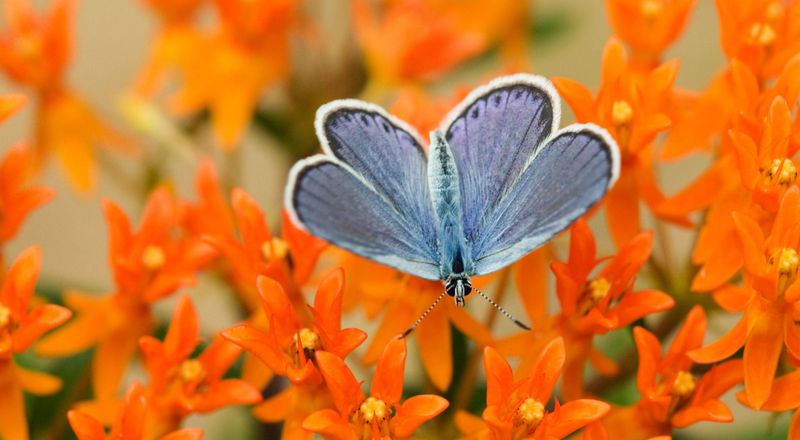
Barely the size of a quarter, these delicate insects display brilliant azure wings that flash like jewels in forest clearings. Their caterpillars feed exclusively on wild lupine, a plant that requires periodic forest disturbances like fires to thrive.
Fire suppression and habitat development have eliminated 99% of their population. Their decline reminds us that even the smallest forest creatures play important roles in the complex web of woodland life.
10. Pacific Fisher
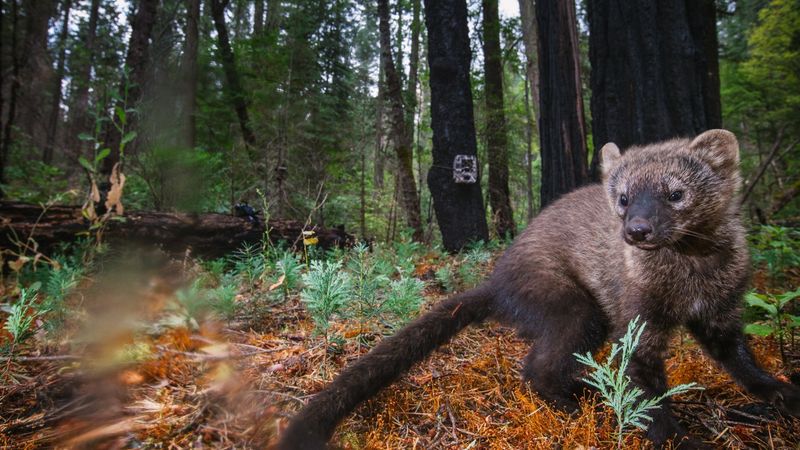
Despite their name, these forest mammals don’t catch fish! Related to wolverines, these sleek, dark predators hunt porcupines and other small animals in old-growth forests of the Pacific Northwest and California. Logging of ancient forests destroyed their prime habitat.
Rodenticide poisoning from illegal marijuana grows further threatens remaining populations. These secretive creatures now occupy less than 50% of their historic range, with fragmented populations struggling to connect.
11. Houston Toad
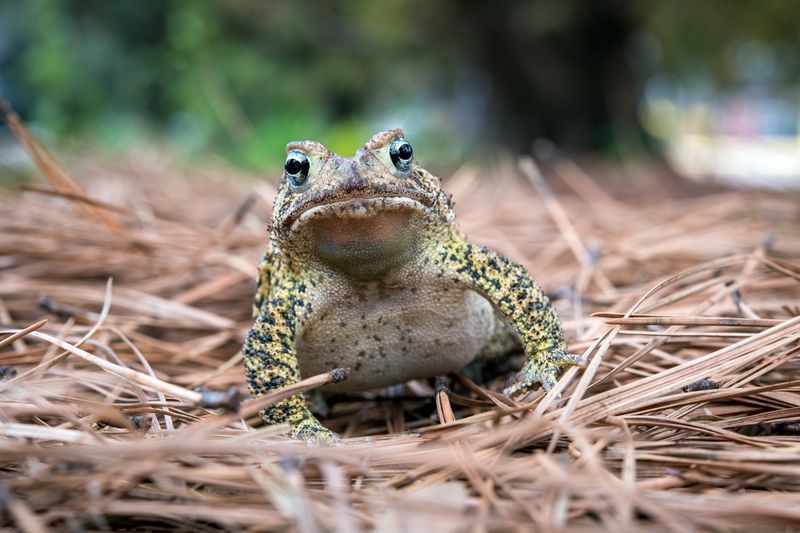
Small and speckled, these amphibians sing like tinkling bells during spring breeding season. Found nowhere else on Earth except pine forests of east-central Texas, their populations have crashed due to urbanization and drought.
Less than 1,000 adults may remain in the wild. Their decline signals broader problems in forest watersheds. Conservation efforts include captive breeding programs and habitat protection, but time is running out for these rare forest songsters.
12. Spotted Owl
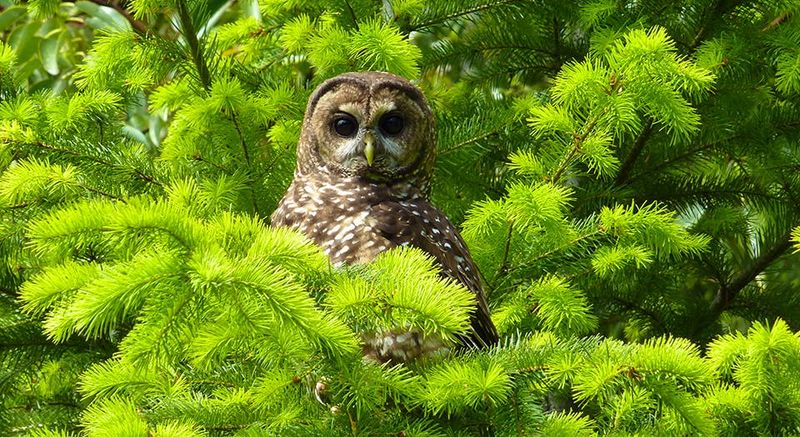
Behind those soulful dark eyes lies a creature perfectly adapted to hunting in the shadowy understory of old-growth forests. These nocturnal birds require ancient trees with complex canopies and large dead snags for nesting.
Timber harvesting destroyed much of their habitat across the Pacific Northwest. Now, aggressive barred owls invade their remaining territory. Their famous controversy pitted loggers against conservationists, symbolizing broader conflicts about forest management.
13. American Burying Beetle
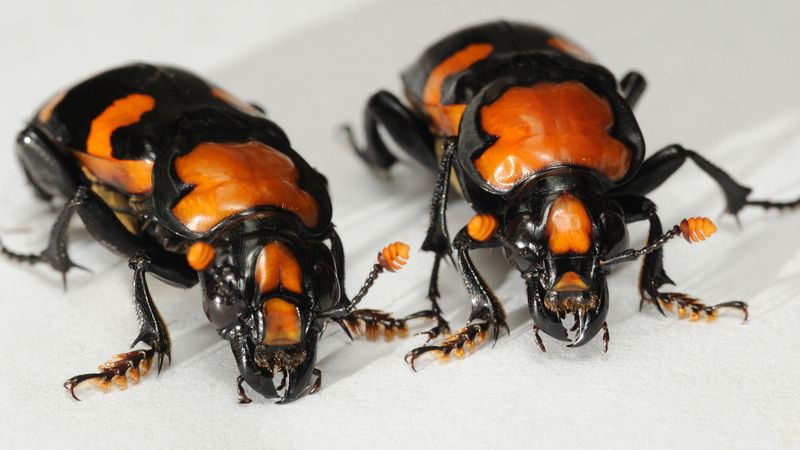
Brilliant orange markings adorn these remarkable insects that clean forest floors by burying small dead animals. Working as pairs, they create underground nurseries where they feed carrion to their young – nature’s undertakers!
Once found in 35 states, they now persist in just a handful. Scientists believe habitat fragmentation and light pollution disrupt their breeding cycles. Their decline means fewer forest nutrients recycled naturally, affecting the entire ecosystem.
14. Woodland Caribou
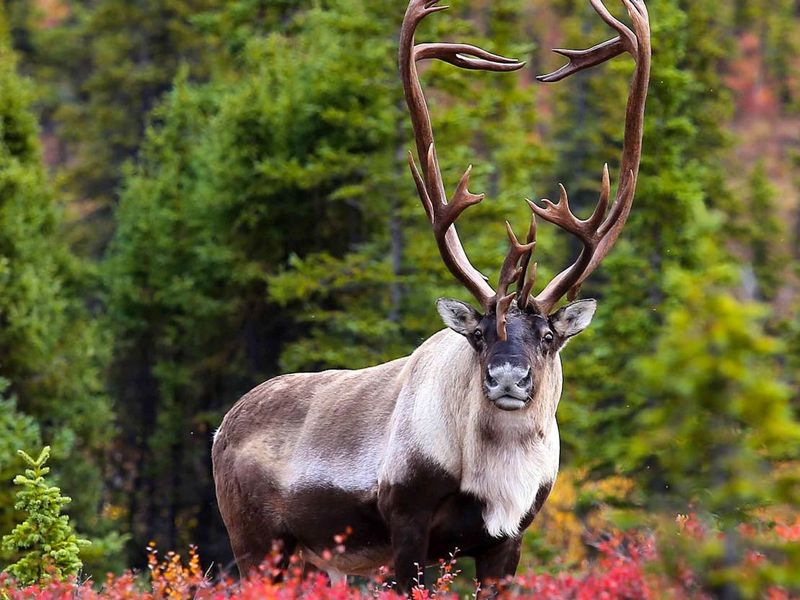
Few Americans realize caribou once roamed forests across the northern United States. These magnificent animals migrate through old-growth forests, feeding on lichen that grows on ancient trees during harsh winters.
Logging, road building, and energy development have fragmented their habitat. The last remaining herd in the lower 48 states disappeared from Idaho and Washington in 2019. Only Canadian populations remain, a ghostly reminder of what our northern forests have lost.
15. Franklin’s Bumblebee
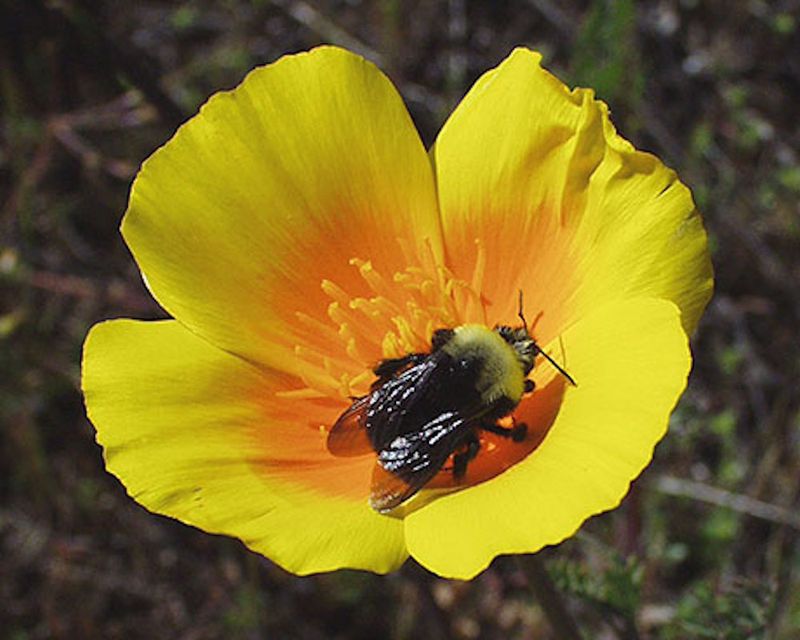
Possibly the most endangered bee in North America, this small pollinator hasn’t been spotted since 2006. With a limited range in southern Oregon and northern California, this forest-edge species displayed a distinctive black face with yellow markings.
Agricultural chemicals likely played a role in their disappearance. Their absence affects wildflower reproduction in forest meadows and openings. Some scientists hold out hope they still exist in remote areas, but each passing year makes rediscovery less likely.

